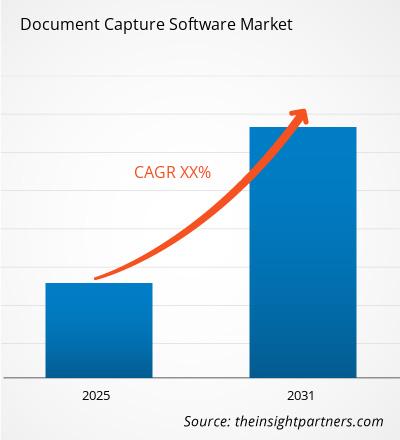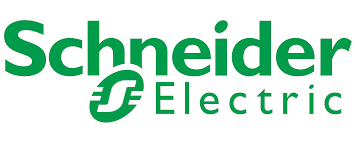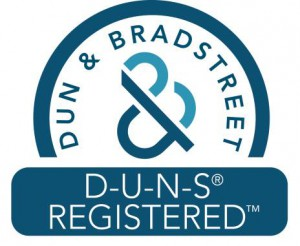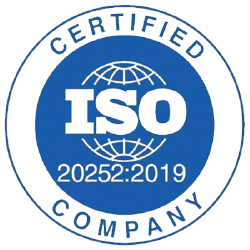Si prevede che il mercato del software di acquisizione documenti registrerà un CAGR del XX% dal 2025 al 2031, con una dimensione del mercato in espansione da XX milioni di dollari nel 2024 a XX milioni di dollari entro il 2031.
Il rapporto è suddiviso in base alla soluzione (acquisizione multicanale, acquisizione cognitiva, acquisizione mobile) e analizza ulteriormente il mercato in base all'implementazione (cloud, on-premise, ibrida). Esamina inoltre il mercato in base alle dimensioni aziendali (piccole e medie imprese, grandi imprese) e ai settori verticali (vendita al dettaglio, BFSI, telecomunicazioni e IT, sanità, trasporti e logistica, energia). Per ciascuno di questi segmenti chiave viene fornita una ripartizione completa a livello globale, regionale e nazionale. Il rapporto include le dimensioni del mercato e le previsioni per tutti i segmenti, presentando i valori in dollari statunitensi. Fornisce inoltre statistiche chiave sullo stato attuale del mercato dei principali attori, insieme ad approfondimenti sulle tendenze prevalenti e sulle opportunità emergenti.
Scopo del rapporto
Il rapporto "Document Capture Software Market" di The Insight Partners mira a descrivere il panorama attuale e la crescita futura, i principali fattori trainanti, le sfide e le opportunità. Ciò fornirà spunti a vari stakeholder aziendali, come:
- Fornitori/Produttori di tecnologia: per comprendere le dinamiche di mercato in evoluzione e conoscere le potenziali opportunità di crescita, consentendo loro di prendere decisioni strategiche informate.
- Investitori: per condurre un'analisi completa delle tendenze in merito al tasso di crescita del mercato, alle proiezioni finanziarie di mercato e alle opportunità esistenti lungo la catena del valore.
- Enti di regolamentazione: per regolamentare le politiche e le attività di controllo sul mercato con l'obiettivo di ridurre al minimo gli abusi, preservare la fiducia degli investitori e sostenere l'integrità e la stabilità del mercato.
Soluzione di segmentazione del mercato del software di acquisizione documenti
- Acquisizione multicanale
- Acquisizione cognitiva
- Acquisizione mobile
Distribuzione
- Cloud
- On-premise
- Ibrido
Dimensioni aziendali
- Piccole e medie imprese
- Grandi imprese
Settori verticali
- Vendita al dettaglio
- BFSI
- Telecomunicazioni e IT
- Sanità
- Trasporti e logistica
- Energia
Potrai personalizzare gratuitamente qualsiasi rapporto, comprese parti di questo rapporto, o analisi a livello di paese, pacchetto dati Excel, oltre a usufruire di grandi offerte e sconti per start-up e università
Mercato del software di acquisizione documenti: Approfondimenti strategici

-
Ottieni le principali tendenze chiave del mercato di questo rapporto.Questo campione GRATUITO includerà l'analisi dei dati, che vanno dalle tendenze di mercato alle stime e alle previsioni.
Fattori di crescita del mercato dei software di acquisizione documenti
- Fornire alle aziende soluzioni di automazione dei documenti senza interruzioni
- Trasformare i flussi di lavoro: l'ascesa dell'intelligenza artificiale nell'acquisizione dei documenti
- Sbloccare l'efficienza: come l'acquisizione intelligente aumenta la produttività
Tendenze future del mercato dei software di acquisizione documenti
- L'acquisizione di documenti basata sull'intelligenza artificiale rivoluziona i processi di immissione dati
- Le soluzioni basate su cloud dominano l'adozione dei software di acquisizione documenti
- Le funzionalità di sicurezza avanzate diventano essenziali nei sistemi di gestione dei documenti
Opportunità di mercato dei software di acquisizione documenti
- Sblocca l'efficienza: trasforma il tuo flusso di lavoro con la tecnologia di acquisizione documenti
- Diventa ecologico: riduci gli sprechi di carta con le soluzioni di acquisizione documenti intelligenti
- Aumenta la precisione: migliora l'immissione dati con l'acquisizione avanzata Mercato del software
Mercato del software di acquisizione documenti
Le tendenze regionali e i fattori che influenzano il mercato dei software di acquisizione documenti durante il periodo di previsione sono stati ampiamente spiegati dagli analisti di The Insight Partners. Questa sezione illustra anche i segmenti e la geografia del mercato dei software di acquisizione documenti in Nord America, Europa, Asia-Pacifico, Medio Oriente e Africa, America meridionale e centrale.
Ambito del rapporto di mercato sul software di acquisizione documenti
| Attributo del rapporto | Dettagli |
|---|---|
| Dimensioni del mercato in 2024 | US$ XX Million |
| Dimensioni del mercato per 2031 | US$ XX Million |
| CAGR globale (2025 - 2031) | XX% |
| Dati storici | 2021-2023 |
| Periodo di previsione | 2025-2031 |
| Segmenti coperti |
By Soluzione
|
| Regioni e paesi coperti |
Nord America
|
| Leader di mercato e profili aziendali chiave |
|
Densità degli operatori del mercato del software di acquisizione documenti: comprendere il suo impatto sulle dinamiche aziendali
Il mercato dei software per l'acquisizione di documenti è in rapida crescita, trainato dalla crescente domanda degli utenti finali, dovuta a fattori quali l'evoluzione delle preferenze dei consumatori, i progressi tecnologici e una maggiore consapevolezza dei vantaggi del prodotto. Con l'aumento della domanda, le aziende stanno ampliando la propria offerta, innovando per soddisfare le esigenze dei consumatori e sfruttando le tendenze emergenti, alimentando ulteriormente la crescita del mercato.

- Ottieni il Mercato del software di acquisizione documenti Panoramica dei principali attori chiave
Punti di forza
- Copertura completa: il rapporto analizza in modo esaustivo prodotti, servizi, tipologie e utenti finali del mercato dei software di acquisizione documenti, offrendo una panoramica olistica.
- Analisi degli esperti: il rapporto è redatto sulla base della conoscenza approfondita di esperti e analisti del settore.
- Informazioni aggiornate: il rapporto garantisce la pertinenza aziendale grazie alla copertura di informazioni e tendenze dei dati recenti.
- Opzioni di personalizzazione: questo rapporto può essere personalizzato per soddisfare le esigenze specifiche del cliente e adattarsi in modo appropriato alle strategie aziendali.
Il rapporto di ricerca sul mercato dei software di acquisizione documenti può quindi aiutare a guidare il percorso di decodificazione e comprensione dello scenario del settore e delle prospettive di crescita. Sebbene possano esserci alcune valide preoccupazioni, i vantaggi complessivi di questo rapporto tendono a superare gli svantaggi.
- Analisi storica (2 anni), anno base, previsione (7 anni) con CAGR
- Analisi PEST e SWOT
- Valore/volume delle dimensioni del mercato - Globale, Regionale, Nazionale
- Industria e panorama competitivo
- Set di dati Excel
Report recenti
Rapporti correlati
Testimonianze
Motivo dell'acquisto
- Processo decisionale informato
- Comprensione delle dinamiche di mercato
- Analisi competitiva
- Analisi dei clienti
- Previsioni di mercato
- Mitigazione del rischio
- Pianificazione strategica
- Giustificazione degli investimenti
- Identificazione dei mercati emergenti
- Miglioramento delle strategie di marketing
- Aumento dell'efficienza operativa
- Allineamento alle tendenze normative






















 Ottieni un campione gratuito per - Mercato del software di acquisizione documenti
Ottieni un campione gratuito per - Mercato del software di acquisizione documenti